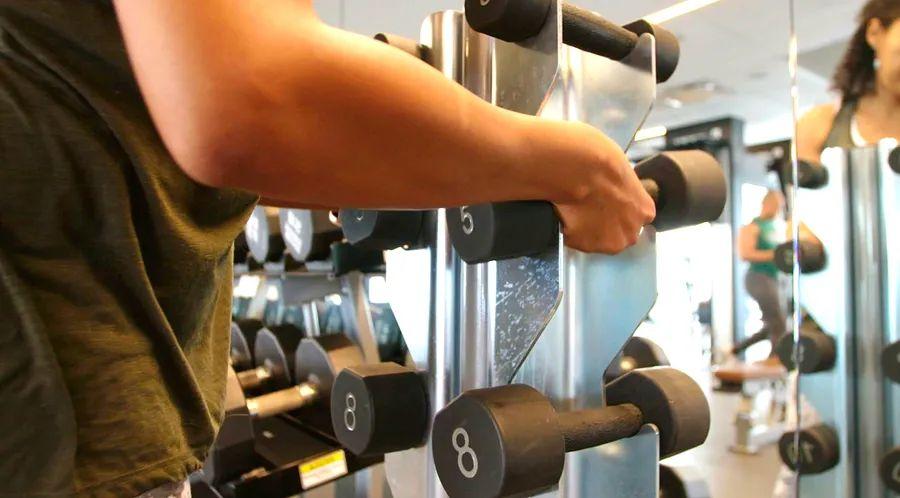This exercise is essential for building total body strength through your arms.

While no single exercise can unlock all your strength gains, variety plays a crucial role. In addition to the classic bicep curl, hammer curls are a game-changer for your arm workouts. They not only build muscle but also improve overall body strength, stability, and functional resilience.
Hammer curls are a twist on the traditional bicep curl. Though they still target the biceps brachii, the main muscle in your upper arm, hammer curls also engage the brachialis beneath the biceps and the brachioradialis in the forearm. This combination supports elbow function and boosts grip strength.
The name says it all—hammer curls replicate the action of swinging a hammer. Unlike standard bicep curls, which involve a palms-up grip, hammer curls use a neutral grip with palms facing each other. This subtle change shifts the focus to build stronger muscles and reduce strain on the wrists and elbows, making it a safer choice for people with joint issues.

The functional advantages of hammer curls in everyday life.
Although not as widely known as other exercises, hammer curls offer significant benefits beyond the gym. They help anyone looking to improve their strength for day-to-day physical tasks. Here's a breakdown of how they can help:
• The neutral grip used in hammer curls strengthens your forearms and grip, enabling you to lift heavier weights and achieve greater overall body strength. This improvement also translates to better performance in sports and other fitness activities.
• Hammer curls target the arm and hand muscles used in daily tasks like lifting, carrying, and holding, making them ideal for activities such as childcare, household chores, and yard work.
• Improved grip strength from hammer curls makes everyday tasks like opening jars, using tools, and completing household chores easier, which is particularly beneficial for older adults aiming to preserve their independence.
• The controlled motion and neutral grip of hammer curls help to reinforce the muscles and tendons around the wrist and elbow, minimizing the risk of common injuries linked to weak muscles and improper lifting techniques.
• Hammer curls reduce wrist rotation compared to traditional curls, lowering the chance of injury, especially for those with prior wrist or elbow concerns.
• Performing hammer curls correctly requires significant core engagement, which boosts balance and strengthens the entire body.
• Bonus: If you're aiming for more defined arms, hammer curls work the brachialis muscle, which lies beneath the biceps brachii and enhances arm muscle visibility even when your arms aren't flexed.
How to perform hammer curls effectively
For optimal results, it’s essential to execute hammer curls with correct form and select a weight suitable for your fitness level. Choose a weight that challenges you but allows you to perform at least eight reps with good technique. Remember to follow the proper breathing pattern—exhale as you lift and inhale as you lower the weights. Proper breathing helps maintain core stability and supports correct posture throughout the movement.
1. Begin by standing with your feet shoulder-width apart, holding dumbbells at your sides with palms facing inwards (neutral grip). Alternatively, you can sit, as long as you're forward enough on the seat so the dumbbells can hang freely at your sides.
2. Exhale as you curl both dumbbells up towards your shoulders, keeping your elbows close to your body and engaging your core to stay stable. Pause briefly at the top of the movement.
3. Inhale as you lower the dumbbells back to the starting position, controlling the descent. Take your time, as the eccentric (lowering) phase is critical for muscle growth.
4. Perform 8 to 12 reps, focusing on maintaining good form throughout.
5. Complete two to three sets, allowing one to two minutes of rest between sets to recover.
Optional variation: If you prefer lifting one arm at a time, alternate between your right and left arms, completing 8 to 12 reps on each arm, for a total of 16 to 24 reps per set.
To ensure proper form and reduce injury risk, be mindful of the following mistakes to avoid:
• Using momentum by swinging the dumbbells instead of engaging your core and relying on arm strength.
• Letting your elbows drift out of position and losing proper arm alignment.
• Choosing dumbbells that are either too heavy or too light for your current strength level.
• Skipping the eccentric (lowering) phase by dropping the weights too quickly.
• Failing to maintain proper breathing and core stability throughout the movement.
As you get stronger, you can progress by either increasing the dumbbell weight or the number of reps within the 8 to 12 range. If you increase the weight, you might need to reduce the reps at first to maintain good form. This is fine as long as you can still complete at least eight reps with proper technique.
How to get the most from this exercise
To fully reap the benefits of hammer curls, incorporate them into your workout routine a couple of times a week. They can be easily added to both arm-focused and full-body training sessions. Alternate with other bicep and tricep exercises for a complete arm workout or use them in a circuit alongside upper and lower body movements.
Remember, hammer curls are not just a substitute for bicep curls. By adding them to your routine, you’ll boost not only your arm strength but also improve your functional capabilities for everyday tasks. This exercise plays a key role in enhancing total-body strength and long-term resilience.

1

2

3

4

5
Evaluation :
5/5